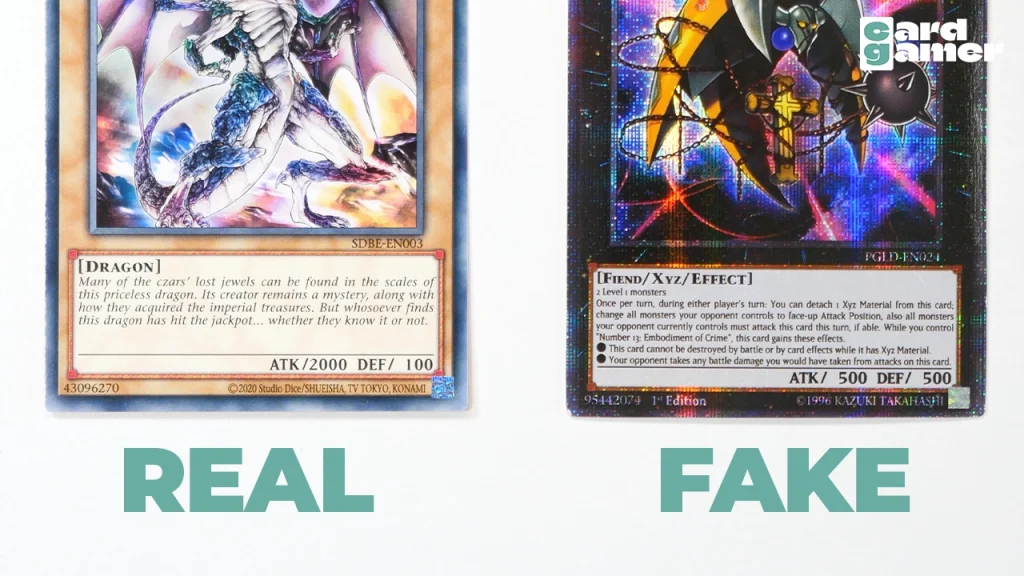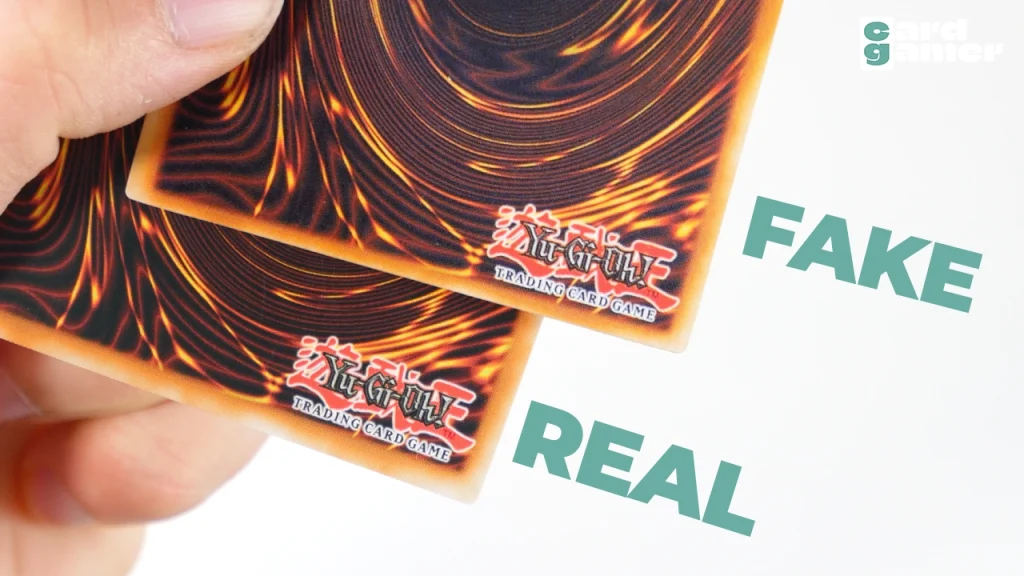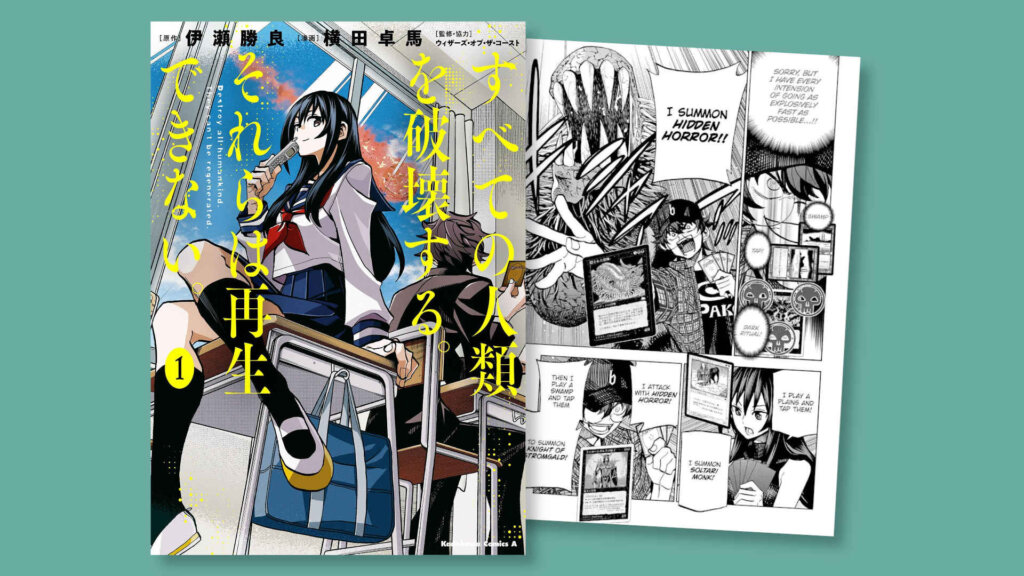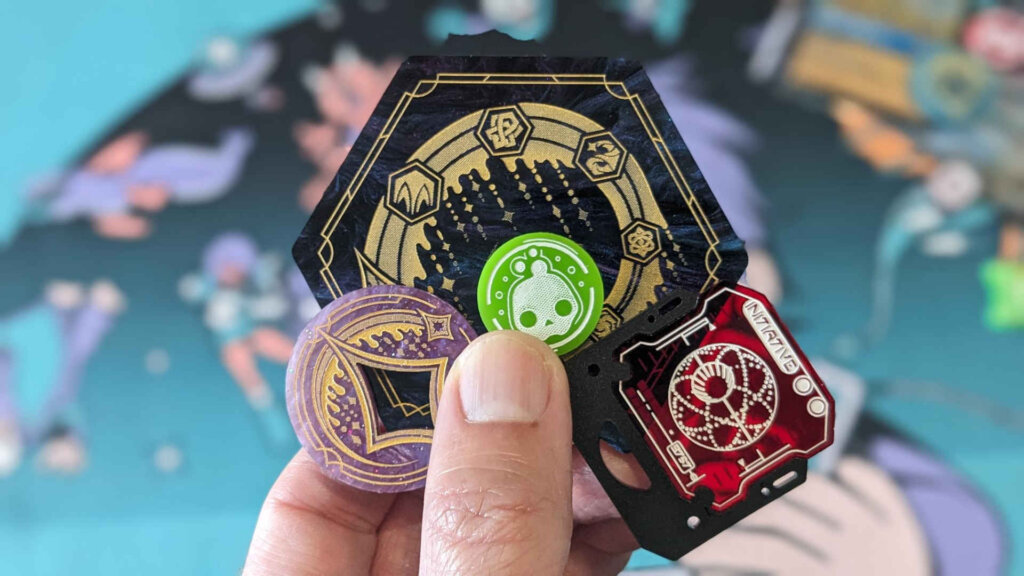Yu-Gi-Oh is an incredibly popular trading card game and has been for a long time now, but with that popularity comes a lot of scammers trying to make a quick buck by people who want to try to trick potential buyers, and they’ve got a few different ways that they try and do this, so we’re going to break them down for you and explain what you need to avoid when you’re trying to build your Yu-Gi-Oh deck.
The Best Ways To Find A Fake Yu-Gi-Oh Card

There are a few key things to look at when searching for a fake Yu-Gi-Oh card:
- The coloring of the card
- Spelling mistakes
- Grammar errors
- Weird card art
- Missing Eye Of Anubis symbol
- Quality of the print (logos/text/images)
One of the first things you should do when checking if a card is fake is to take a closer look at the card itself.
You see, fake Yu-Gi-Oh cards are often extremely poorly translated from the original OCG card, with no real checks as to whether what they’re translating actually makes any sense.
If there’s a weird font, a spelling/grammar mistake, or lowercase letters where they don’t belong, you’ve probably got a fake card on your hands. The same goes for the various symbols on a card (the attribute, the stars, the card art itself). If something looks vaguely off, then that’s probably because something IS vaguely off with the card due to it being fake.
You always get specifically what you pay for, so if you think you’ve found a really good deal on an extremely rare card, then you need to prepare yourself for the inevitable possibility that you might have bought a fake card.

There are specific codes that appear just underneath the image in cards, with that code referring to the set that the card was printed in, the region, and the number of the card in the set.
For example ‘MAGO-EN005’ refers to the Blue-Eyes White Dragon that was printed in Maximum Gold, specifically the English version, and also means that it was the fifth overall card printed in that set.
The main way to check for whether a card is real is that the bottom right corner of any official Yu-Gi-Oh card has what Konami refers to as the ‘Eye of Anubis’ symbol. It’s a foil seal that is either gold or silver depending on the edition of the card.
There’s also usually an unusual color issue when it comes to fake cards, with most fake cards having a off-color yellow look to them.
Finally, and this is important: don’t get fake cards confused with Oricas. An Orica is an ‘Original card’, basically a fan-made card that is created by an artist. These are always labeled as such and aren’t trying to trick you into spending money on something that you can’t actually use in the game. Just make sure you’re reading the full listing of the product, and make sure that you actually know what you’re buying.
This article may contain affiliate links. If you use these links to purchase an item we may earn a commission. Thank you for your support.




